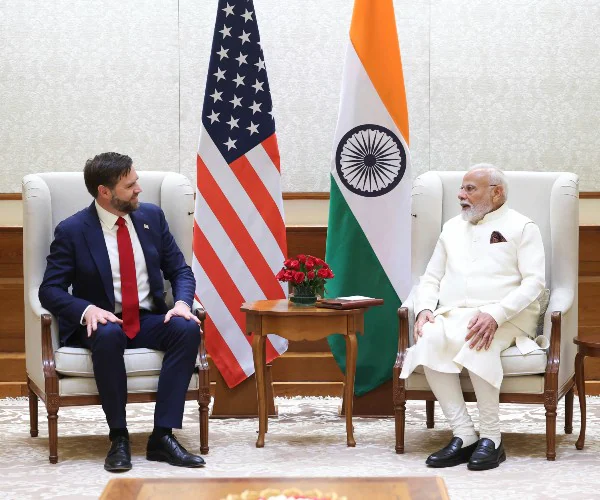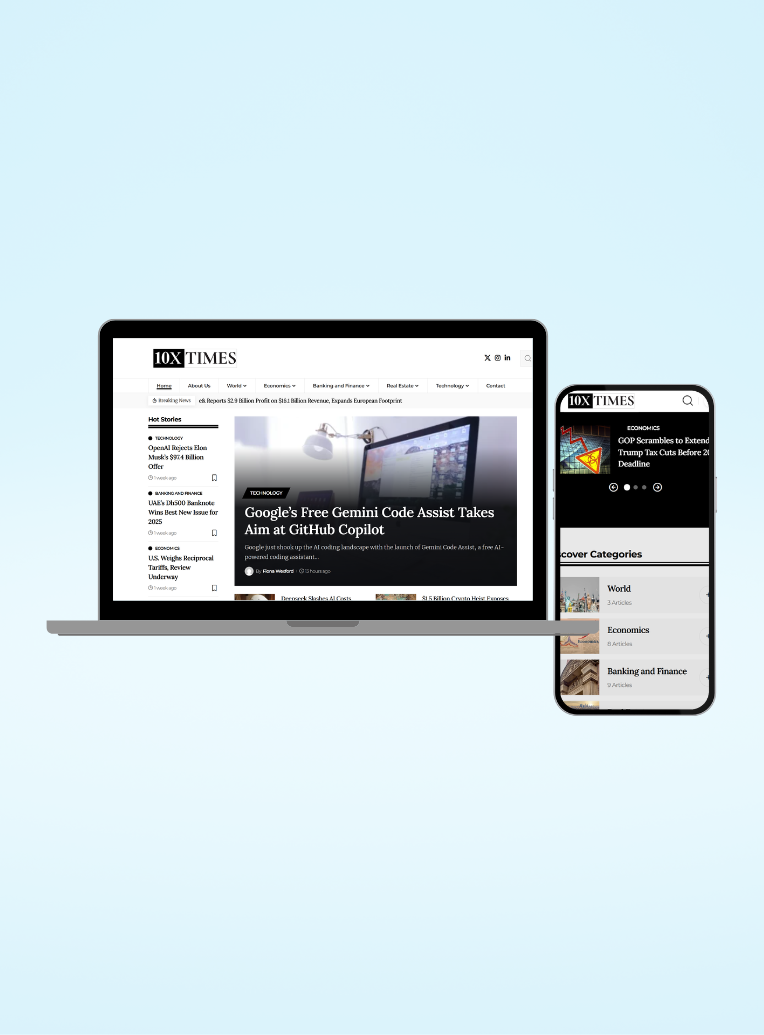India’s Prime Minister Narendra Modi and U.S. Vice President JD Vance expressed optimism over the progress in formalizing an India-U.S. Trade Agreement, signalling renewed momentum in economic ties between the world’s two largest democracies.
During a visit to New Delhi, U.S. Vice President Vance, accompanied by Second Lady Usha Vance and their children, met with Prime Minister Modi to discuss ongoing India U.S. trade talks. Though Vance’s visit was partly personal, the meeting underscored the commitment both countries are placing on deepening strategic and economic engagement.
Key Discussions and Trade Agreement Progress
A statement from the Prime Minister’s Office highlighted that both leaders “welcomed the significant progress in the negotiations for a mutually beneficial India-U.S. Trade Agreement.” The leaders praised the positive trajectory of trade relations and discussed the roadmap for finalizing the agreement in the near future.
Vice President Vance noted the strengthening cooperation across key sectors such as energy, defence, and advanced technologies. The two leaders reiterated the importance of India-U.S. trade relations in enhancing innovation and creating economic opportunities for citizens in both countries.
The discussions also covered various regional and global issues of mutual concern, with both leaders calling for greater emphasis on diplomacy and dialogue in resolving geopolitical tensions.
Easing Tariff Tensions: The Reciprocal Tariff Issue
One of the challenges in recent India U.S. trade talks has been the imposition of reciprocal tariffs. On April 2, 2025, India was hit with a 26% tariff on selected exports. However, just a week later, U.S. President Donald Trump temporarily suspended these levies for 90 days, returning to a 10% baseline tariff.
Speaking on Monday, U.S. Trade Representative Jamieson Greer revealed that the Office of the USTR and India’s Ministry of Commerce and Industry had “finalized the terms of reference to lay down a roadmap for negotiations on reciprocal trade.”
Greer acknowledged that “there is a serious lack of reciprocity in the trade relationship with India,” but praised New Delhi’s constructive engagement so far. “I look forward to creating new opportunities for workers, farmers, and entrepreneurs in both countries,” he added.
Aiming High: Trade Volume Target of $500 Billion by 2030
The Modi-Vance meeting comes on the heels of a key February agreement between Prime Minister Modi and former President Trump, where both leaders set an ambitious goal of doubling bilateral trade to $500 billion by 2030.
According to the latest data from the Office of the U.S. Trade Representative, total goods trade between the United States and India reached approximately $129 billion in 2024. India maintained a trade surplus with the U.S., valued at $45.7 billion, underlining the growing significance of the partnership.
Looking Ahead: A Strategic Economic Partnership
As India continues to position itself as a global manufacturing and digital hub, the momentum toward finalizing the India-U.S. Trade Agreement is seen as a crucial step in strengthening long-term economic alignment.
Strategists on both sides believe the agreement could serve as a catalyst for diversifying supply chains, increasing investment flows, and reinforcing democratic economic frameworks. Enhanced collaboration in clean energy, semiconductors, digital infrastructure, and critical minerals is also expected to be on the agenda.
Both countries reaffirmed their commitment to a fair and rules-based global trade system, with shared values of transparency, economic openness, and innovation driving the relationship forward.
In The End
The latest developments in Modi Vance trade discussions point to a new chapter in India-U.S. economic partnership. As negotiations progress, the world watches with interest how two major democracies align on trade, technology, and strategic cooperation. With clear goals and growing political will, the India-U.S. trade Agreement could soon become a landmark accord shaping future global commerce.






